From restoring a coral reef in Bonaire, to finding a secret surf spot in Panama, to learning how to bomba dance in Puerto Rico, these nomads share their most indelible moments.
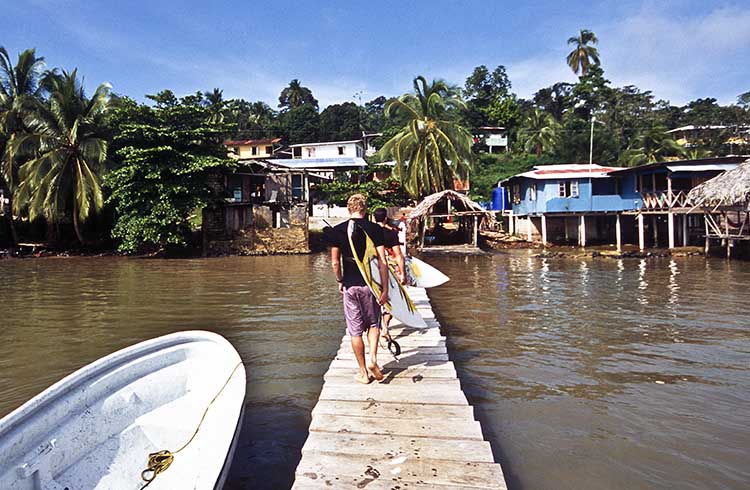 Photo © Getty Images / tropicalpixsingapore
Photo © Getty Images / tropicalpixsingapore
- Surf trippin’ in Panama
- A bomba workshop in San Juan
- Connecting through craft beer in Puerto Rico
- Guavaberries, a Caribbean Christmas carol
- Restoring a coral reef in Bonaire
- Listen to the World Nomads Podcast: Caribbean
Surf trippin’ in Panama
On a particularly hot, humid, and surf-less January day on the Pacific Coast of Costa Rica, I get a text message from a friend promising a swell in the Caribbean.
A day later, I cross the Panamanian border to Changuinola, and catch a one-hour speedboat bound for Isla Colon in Bocas del Toro province.
After our first surf at a punchy wave called Paunch, we replenish at a signless roast chicken joint behind a chain link fence. Ice-cold Balboa cervezas accompany the salty chicken and neon-orange habanero sauce.
The next day, the entire town of Bocas gathers in the plaza as the President of Panama arrives by helicopter. Running down in the nick of time, we're able to shake the hand of Ricardo Martinelli as he works the crowd.
Meanwhile, we’ve heard about a secret wave on Isla Bastimentos that you can only access by hiking to it.
After more than an hour of trudging through the jungle in sticky, sandal-snapping mud, we find a surf spot. We know it's the one, because the secret is out: six other surfers sit waiting for a wave. We paddle out and say hello. Within minutes, one of the other surfers shouts, “BULL SHARK!”
I nearly walk on water as I paddle to the shore, grab my broken Havaianas, and sprint back to the docks.
That night, we celebrate our misadventures at the local bars. Since I’d already lost one pair of thongs and know of a swim-up cantina, I put a protective layer of duct-tape on my feet in lieu of shoes. Going shoeless pays off when we have to swim, fully clothed, to the last boat back to Isla Colon. - Audrey Hills
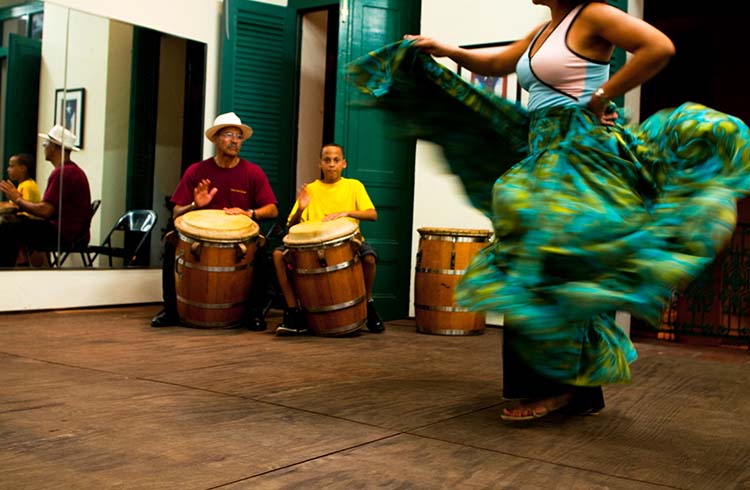
A bomba workshop in Puerto Rico
“Maraca, cuá, buleador, subidor!”
We repeat the instructor’s words as she stands on stage, pointing at various instruments – a rattle, a pair of wooden sticks, low-pitch and high-pitch drums. Before I can memorize them, more words follow: “seis corridos, sicá” – names of distinct beats that the drummer demonstrates for us. Learning bomba, Puerto Rico’s earliest musical genre created by enslaved Africans, feels like learning a new language.
I might have missed this bomba workshop, held at Corporación Piñones se Integra’s (COPI) community center in Loíza – the heart of Afro Puerto-Rican culture – if I hadn’t contacted Local Guest. A community-focused tour enterprise, Local Guest connects visitors with immersive experiences around Puerto Rico. They’d arranged my visit with COPI’s founder, Maricruz Rivera, who shared the history of Puerto Rico’s African heritage and the decades of marginalization of Black boricuas (Puerto Ricans) in this Piñones region. In 2001, the center began reviving bomba music to preserve Afro-Puerto Rican identity and culture for future generations.
That same week, Rivera invited me back to COPI – a 15-minute drive east of Old San Juan – to join a group US students and teachers for a bomba class.
It’s time to dance and demonstrate what we’ve learned together. The women are handed green, red, or yellow skirts, used to express bomba’s signature movements. We shake our hips while moving backwards, our hands holding our skirts out wide; we stop and sway side to side, while snapping our skirts open. With each move we make, slow or fast, the drummer beats a corresponding rhythm. Learning bomba, it turns out, isn’t about words. It’s about unity. - Lily Girma
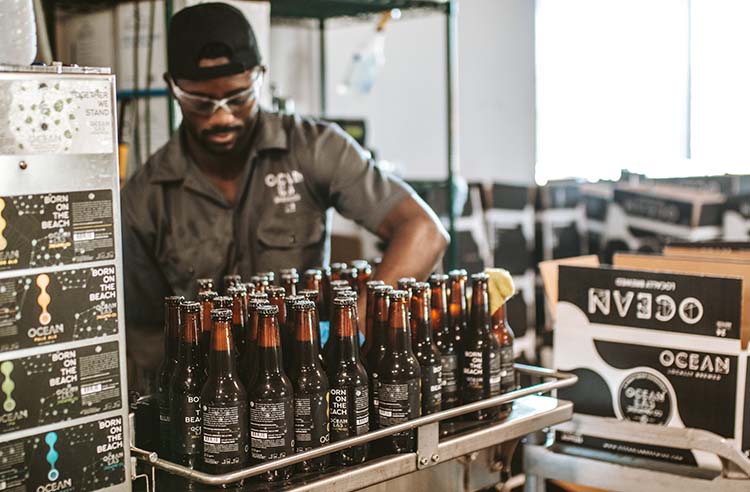
Connecting through craft beer in Puerto Rico
Before visiting in 2019, I hadn’t visited Puerto Rico (PR) in 14 years, before the term “craft beer” entered the lexicon of anyone outside the savviest of mainland American connoisseurs. True, I’d snuck the occasional sip of Cuba Libre during my family’s annual vacations, taken to nurture friendships forged in 1950, when my Caucasian grandparents began bringing their children down every year for a winter escape. But in 2005, I had yet to imagine I’d become a professional beer writer, and options for local cerveza consisted of little more than mass-produced Medalla.
When a work trip called me to return, I sought out several of PR’s dozen-or-so artisanal breweries, plus bar owners and homebrewers. I learned that independent breweries like Ocean Lab, Pura Vida, FOK, and REBL are blossoming from the beaches to the mountains. In San Juan, publicans are pouring them all.
The geographic penetration surprised me. But true shock came from witnessing the prevalence of craft beers I’ve devoted my career to writing about.
One afternoon, stopping for lunch in what used to be barely passable jungle, I literally gasped when I spotted a coffee shop covered in decorative signs for breweries like Bell’s, Cigar City, and North Coast. Two decades ago, I doubt this area had running water. Now it has American craft beer.
And at La Taberna Boricua in San Juan, a keg poured Founders Canadian Breakfast Stout, a Michigan beer so rare I’ve never seen it on draught. Words evaded me when the bartender poured me an entire pint.
I’ve carried a lot of guilt about neglecting my life-long Puerto Rican friends, especially after Hurricane Maria. But with this new community joining my present with my past, I feel my sentimental homeland has embraced me anew. - Tara Nurin
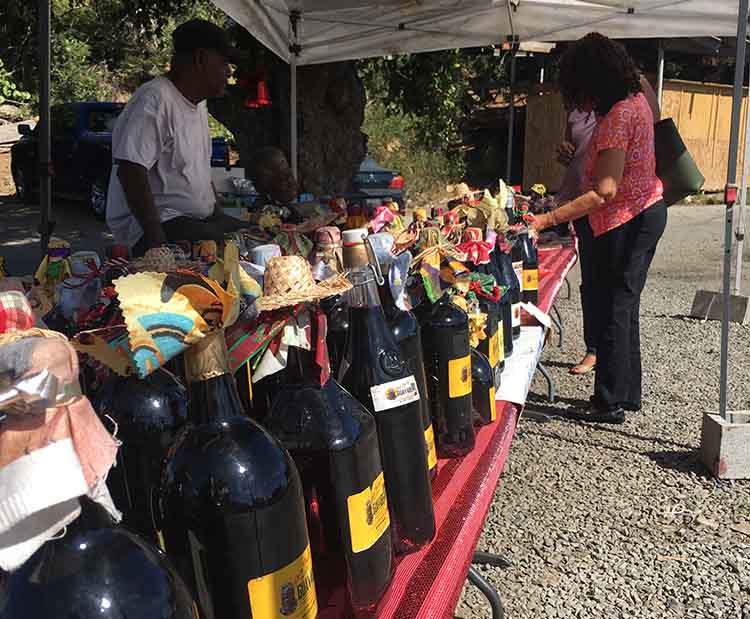
Guavaberries, a Caribbean Christmas carol
For me, it’s not the holidays without a healthy dose of guavaberry liqueur. I’ve celebrated Christmas nearly every year with family on St. John in the US Virgin Islands, and this Yuletide beverage is as traditional as Santa’s milk and cookies.
The sweet, but strong, rum-based brew is the product of a centuries-old eastern Caribbean tradition steeped in song, celebration, and secrecy. Groves of guavaberries, which appear year to year, are as transient as Scrooge’s generosity, and are closely guarded family secrets.
There are commercial versions available, but our go-to source for the authentic stuff is Lucia Henley’s stand off of Highway 32 in the East End of St. Thomas, another of the US Virgin Islands. Henley is among the most prolific purveyors of the homemade drink, and visitors can find her stand well-stocked from November through December with guavaberry liqueur, jams and pies.
A song, “Good mornin’, good mornin’, ah come for me guavaberry…” speaks to the island custom of caroling house to house in exchange for a sample of that family’s stash, and Henley always sings a few lines of the tune as she offers me a taste of her concoction. It’s special, like a fine brandy, and is traditionally passed between carolers and revelers in the same way as wassail – the mulled wine drink of Medieval Christmastime that’s also linked to song. Today, guavaberry liqueur is most often enjoyed alone in a snifter or over ice, as a holiday aperitif, but it’s also tasty as a topping over ice cream.
Our favorite way to imbibe is after caroling and Christmas Eve events on St. John, following Santa’s visit – by boat – in downtown Cruz Bay, and each sip of the bright red drink adds to the festive atmosphere. - Ashley Winchester

Restoring a coral reef in Bonaire
Weighted down by scuba gear and floating just above the sandy ocean floor, I carefully tie a string, dangling a coral fragment, to the branch of a “tree” in a coral nursery. The tree is made of thin, metal cross bars attached to a thicker post – coral fragments hang from each bar like Christmas ornaments. Around me, divers gently brush juvenile coral to remove algae and predators, while others clip, restring, and rehang fragments – which grow an inch a month – on the trees. The clipping process enables the coral to regenerate time and again.
These coordinated efforts are all part of a Discover Reef Renewal Dive with Reef Renewal Foundation Bonaire. We’re helping to restore the coral that surrounds the island and provides habitats to myriad marine life. After all, the reefs are what draw divers from around the world to this small, Dutch Caribbean island around 50mi (80km) north of Venezuela.
Reef Renewal Foundation Bonaire was founded in 2012 with a mission to protect and restore the coral reefs within the Bonaire National Marine Park, which was established in 1979 and surrounds the island entirely. Currently, some 13,000 individual corals are grown in Reef Renewal Foundation Bonaire’s eight nurseries, and more than 22,000 corals have been outplanted back to the reefs. The foundation invites certified scuba divers who are interested in volunteering to complete a training course and assist with the nursery, maintenance, and outplanting corals to restoration sites around Bonaire and Klein Bonaire.
As someone who’s been passionate about marine life since learning to snorkel in Hawaii as a little girl, I'm thrilled to participate in a Discover Reef Renewal Dive and do my part to help preserve Bonaire’s coral reefs for future generations. - Susan Barnes
Listen to the World Nomads Podcast: Caribbean
Hear more about bomba music, plus learn about safety in Jamaica, the hidden Dominican Republic, and saving sea turtles in Costa Rica.
Related articles
Simple and flexible travel insurance
You can buy at home or while traveling, and claim online from anywhere in the world. With 150+ adventure activities covered and 24/7 emergency assistance.
Get a quote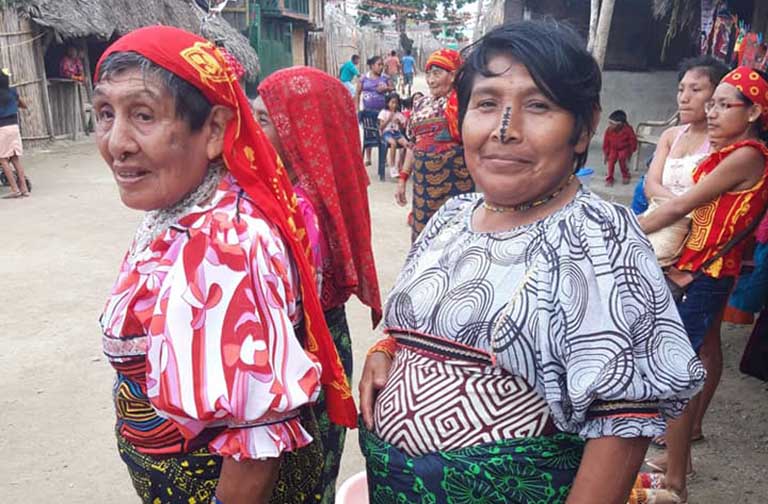
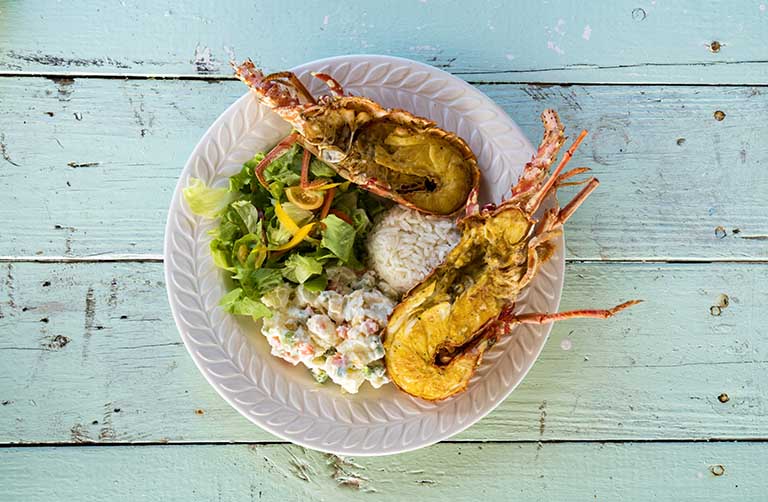
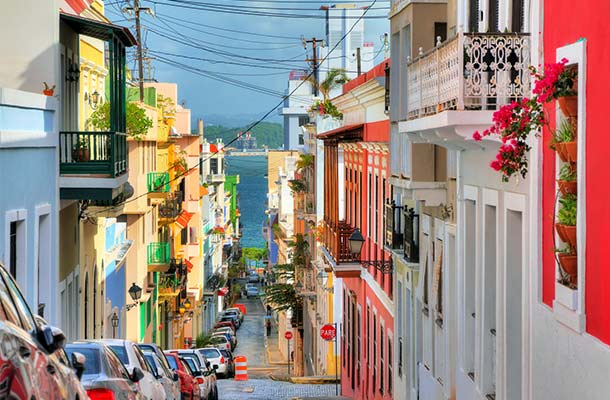
No Comments